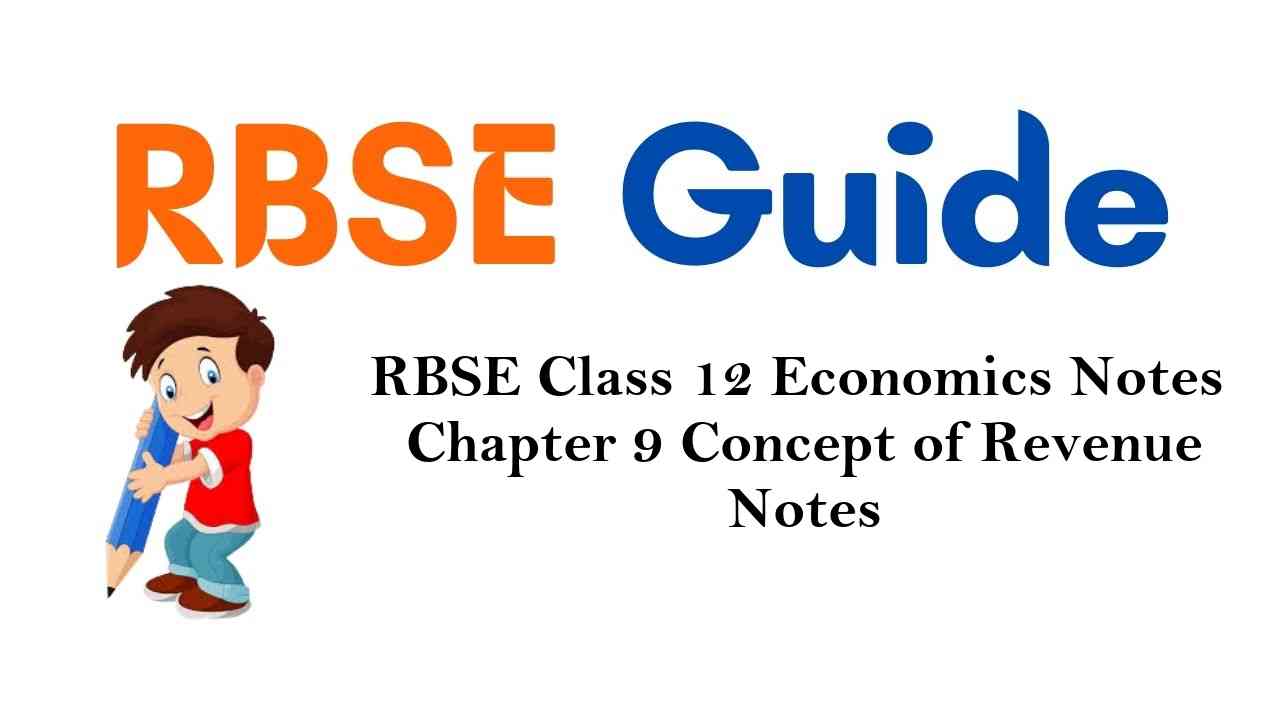Rajasthan Board RBSE Class 12 Economics Notes Chapter 9 Concept of Revenue
Revenue implies the value or income that a producer gets by selling manufactured products.
The revenue obtained by the producer includes the cost of the product as well as the profit.
Total revenue is calculated by multiplying the quantity of sale by its price. [TR = QxP]
Average revenue is calculated by dividing total revenue by the quantity of sale.
\(AR=\frac { TR }{ Q } \)
Marginal revenue implies the additional income obtained by selling one additional unit of
Average revenue and price are the same thing.
The average revenue line is called demand line.
![]()
In a perfect competition market, the average revenue line is a straight line parallel to the X-axis.
In a perfect competition market, the average revenue line and marginal revenue line are the same, riot different.
In a molopolistic market, the average and marginal revenue lines drop from up to down.
The total revenue first increases and starts reducing after reaching the maximum point.
The marginal revenue line drops more steeply than the average revenue line. That is why the average revenue curve remains above the marginal revenue curve.
The number of sellers and buyers is very large in a perfect competition market, because of which a single buyer or seller cannot influence the price.
In such a market, the price is determined by the relative forces of the total demand and supply of the market.
In a monopolistic market, there is a single producer or seller of a product.
An imperfect competition is the situation in between monopoly and perfect competition.
Average revenue and marginal revenue have great significance in price analysis.
![]()
Important Questions
- Revenue – By selling a commodity, whatever money a firm receives is called its revenue or the amount of money which the firm receives by the sale of its output is known as revenue.
- Total Revenue – Total revenue is the amount of total sales of goods and services. It is calculated by multiplying the amount of goods and services sold by the price of the goods and services.
- Average Revenue – Average revenue describes the average amount of revenue a firm makes on each unit of a good it sells. It is calculated by dividing the total revenue by the total quantity of products sold.
- Marginal Revenue – The additional revenue earned by sale of additional unit of the product.
- Monopolistic Market – It is such a market in which there is a single producer or seller of a commodity.
- Price Monopoly – Monopoly competition is a type of incomplete competition, in which a few producers sell differentiated products (such as by branding or quality) and therefore, each seller can produce a large part of the total production of the entire industry.
